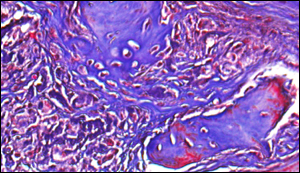New hydrogels show promise in treating bone defects
21. 8. 2019 | UCLA | www.ucla.edu
Bioengineers and dentists from the UCLA School of Dentistry have developed a new hydrogel that is more porous and effective in promoting tissue repair and regeneration compared to hydrogels that are currently available.
Once injected in a mouse model, the new hydrogel is shown to induce migration of naturally occurring stem cells to better promote bone healing. Current experimental applications using hydrogels and stem cells introduced into the body or expensive biological agents can come with negative side effects.

Hydrogels are biomaterials that are made up of a 3D network of polymer chains. Due to the network’s ability to absorb water and its structural similarities to living tissue, it can be used to deliver cells to defective areas to regenerate lost tissue. However, the small pore size of hydrogels limits the survival of transplanted cells, their expansion and new tissue formation, making this less than ideal for regenerating tissue. One material that has caught on in the field of biomaterials is the naturally occurring mineral, clay. Clay has become an ideal additive to medical products with no reported negative effects. It has been shown to be biocompatible and is readily available.
Read more at UCLA
Image Credit: UCLA
-jk-




